#Marion Brown
Explore tagged Tumblr posts
Text

MAL WALDRON & MARION BROWN, Toronto 1987 + 1988
Malcolm Earl Waldron was one of the most prolific jazz artists I ever photographed, recording over 100 albums under his name and over 70 as a sideman. I met him for the first time in 1987, when he was in town for a solo concert and to record a solo record for a label owned by a local music promoter. Born in New York City, he was the house pianist at Prestige Records, and appeared on records by everyone from Charles Mingus, John Coltrane and Eric Dolphy to Gene Ammons, Kenny Burrell and Teddy Charles. He was Billie Holiday's last accompanist, and after her death played with singer Abbey Lincoln and her husband Max Roach. His playing began to change during this period, but it was a breakdown after a drug overdose in 1963 that really marked a shift in his playing; he had to re-learn music, and his sound took on a minimal, austere style after this. I tried to capture a bit of this when I photographed him for the first time, in a barely furnished room upstairs in the club on Queen Street West where he was playing.




I photographed Mal Waldron again almost exactly a year later, when he returned to the same club with saxophonist Marion Brown. The two had played as a duet on a record in 1985, and their styles mixed together well, with elements of hard bop and free jazz that reflected their own long careers in jazz, though Brown had only started recording as a leader in the late '60s. I didn't give either of them much direction when I took their portraits in the same room where I'd photographed Waldron a year later - a space that had acquired a ragged couch and several other pieces of worn-out furniture since that first shoot. That included a rickety chair that I stood on when trying to get a slightly more elevated view with my waist-level Mamiya camera; I teetered on the chair for a second before it collapsed beneath me, the tubular frame hitting me on the back of the head as I fell. I made sure my camera was OK when the stars cleared, while Waldron and Brown looked on with the same cool gaze and asked "are you alright?"






Saxophonist Marion Brown made his early mark on two classics of free jazz - Archie Shepp's Fire Music and John Coltrane's Ascension. Like Mal Waldron he had an interest in the music of Erik Satie, and spent much of his career living and playing in Europe from the '60s onward. He appeared on Harold Budd's ambient album The Pavilion of Dreams and began painting and drawing a few years before I photographed him with Waldron. I took a few portraits of him alone, and one of them is still among my favorite early portraits - the sort of simple, direct work I was striving to create at the time, though it wasn't the kind of portrait style that was much in vogue. I also took some live shots of Waldron and Brown either before or after both shoots, and one of them ended up in the artwork of the album Waldron recorded here (though you have to squint to find it.) Marion Brown died in Hollywood, Florida after a series of illnesses in 2010. Mal Waldron died of cancer in Brussels in 2002.



#mal waldron#marion brown#jazz musician#portraits#portrait photography#portrait#black and white#film photography#some old pictures i took#early work#mamiya c330#pentax spotmatic#jazz#concert photography
8 notes
·
View notes
Text
Music is an Essential Verb: Derek Taylor 2023
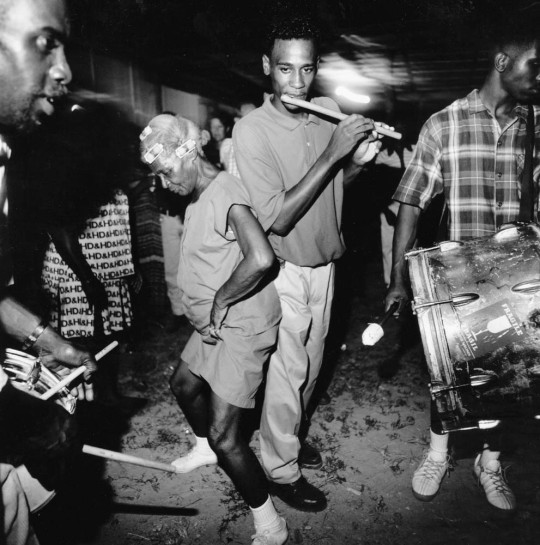
Music remains, along with family, friends, and a select few venial vices, my primary daily defense against the mental erosions of spiritual malaise and existential dread. Being a humanist also means being a realist, and little looks to be different on that score in the year ahead as we continue to careen toward a bleak and self-defeating dénouement. The veil of uncertainty around what ultimately feels like inevitability redoubles the need to remain thankful for and supportive of those who devote themselves to art. Summary capsules below describe some of the sounds that kept me going in 2023.
Peter Brötzmann, Wayne Shorter, Kidd Jordan, & Charles Gayle

“The trauma of my generation was what our fathers had done to the rest of the world, and so we said, ‘never again,’ and that was the whole impetus through all my life, and it still is.” ~ Brötzmann (2018)
Musician attrition and demise are dispiriting aspects of every annum, but the departure of four disparate octogenarian reedists exacted an especially steep emotional and cultural toll this year. Shorter and Jordan passed away in March, each of them leaving a rich legacy as indefatigable improviser and altruistic educator that continue influence and inspire. Brötzmann exited in June after the return of a protracted respiratory illness. Few if any can match the magnitude of his mileage and six-decade itinerary as an irrepressible, obstinately adventurous world traveler. Gayle ascended in September, an ardent, uncompromising eremite to the end. All four men left behind discographies and concert/interview footage that will leave the faithful and curious listening and marveling in perpetuity, but their collective absence still aches.
Kirk Knuffke & Joe McPhee Quartet + 1 – Keep the Dream Up (Fundacja Sluchaj)
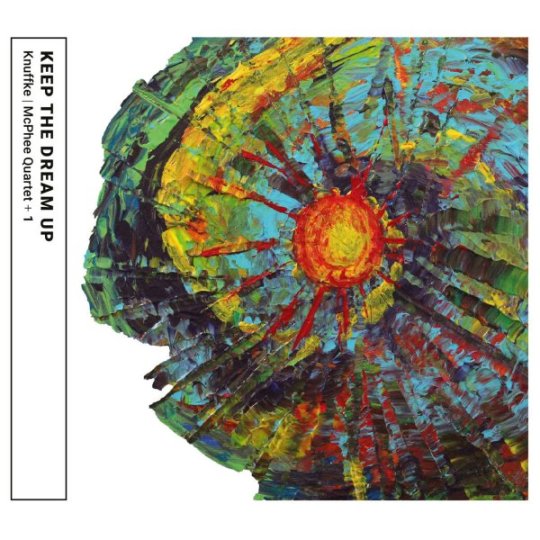
One of the manifold joys of following the output of Kirk Knuffke is anticipating who he’ll collaborate with next. The cornetist’s ears and imagination are as huge as his heart, a trait he has in common with the equally equanimous Joe McPhee. They’ve known each other for years but Keep the Dream Up is their first released collaboration and it’s an affirming alloy of their complementary creative temperaments. Longtime McPhee comrades Michael Bisio and Jay Rosen complete the quartet with bass clarinetist Christof Knoche comprising the additive on a Brooklyn studio session that captures collective creative lightning in a digital bottle. My album of the year for these reasons and more, although hopefully Joe will bring his brass to a follow-up conclave soon.
Don Byas – Classic Sessions 1944-1946 (Mosaic)
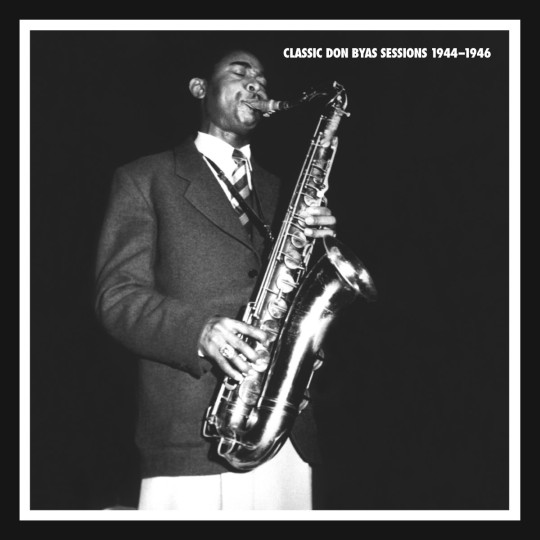
Saxophonist Don Byas recorded prolifically during the 1940s. His porous sound and popular style bridged the schools of swing and bop through prowess and panache aligned with the most esteemed of post-WII tone scientists. That sustained industriousness hasn’t reflected in reliable access to his works, primarily because they’re spread across a plethora of independent labels and competing copyrights. Leave it to Mosaic Records to rectify the longstanding reissue lacuna. This long gestating collection corrals and sequences the bulk of them across ten discs, scrubbing their sound, and adding an expansive cache of rarified verité concert recordings made in a Swedish jazz fan’s residence. Indulging in one’s Byas bias has never been easier or as edifying.
Fred Anderson – The Milwaukee Tapes Vol. 2 (Corbett vs Dempsey)
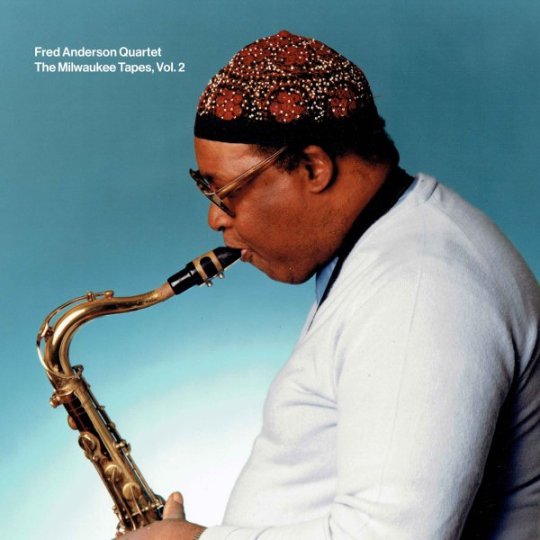
Patience and long-game aptitude are among music producer/archivist/advocate John Corbett’s virtues. This unexpected, but abundantly welcome sequel to an archival Anderson collection on Corbett’s long defunct Unheard Music Series took 23 years to secure commercial circulation and offers an additional hour-plus from the same gig in improved sound. Fellow AACMers Billy Brimfield and Hamid (nee Hank) Drake join bassist Larry Hayrod in bringing vibrant, detailed life to the Lone Prophet of the Prairie’s (as Anderson was affectionately known) serpentine, cerulean melodies. Corbett’s current label released a plenitude of music in 2023 (see also below) but the uncommon opportunity to hear more Anderson of any vintage makes this release worthy of independent mention.
Jason Adasiewicz
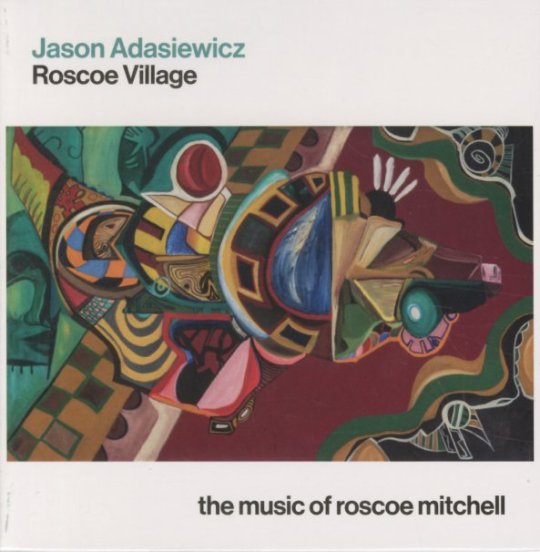
Corbett vs. Dempsey also had a welcome role in Jason Adasiewicz’s return to record with two different projects. On vinyl, Roy’s World documents a 2017 Chicago studio session by the vibraphonist’s quintet originally intended as the soundtrack to a film based on neo-noir novelist Barry Gifford’s short stories. Chicago stalwarts Josh Berman, Joshua Abrams, Hamid Drake, join saxophonist Jonathan Doyle in the ensemble for a program that sounds at once fresh and nostalgic while always vital. On CD, Roscoe’s Village dispenses with band for a solo selective foray through the songbook of Roscoe Mitchell including evocative renderings of “Congliptious” and “A Jackson in Your House” that retain the composer’s essence while striking out in bold new directions.
Natural Information Society
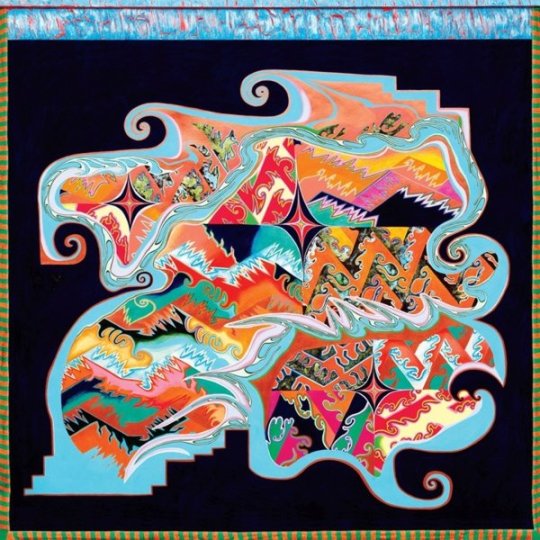
Grounded as it is in core voices of guembri, frame drum and harmonium, codification of Josh Abrams’ NIS as a jazz ensemble immediately feels reductively incomplete. All participating instruments can be active architects in the undulating, melody-laced drones that frequently form the basis of the band’s gradual, granulated improvisations. Performances are more akin to collective expeditions where a galvanizing gestalt effect is afoot; one where earned communal peaks preserve the individual power and agency of the interlocking parts. Since Time is Gravity augments this already catalytic template by incorporating a larger contingent of Chicago colleagues including tenorist Ari Brown to the equation.
Abdul Wadud
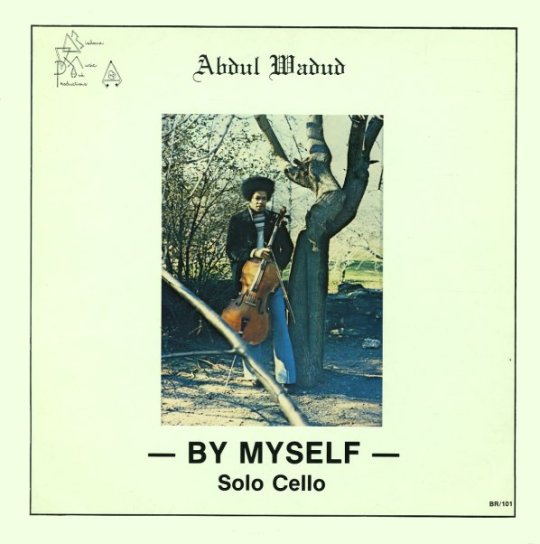
A jazz-based improviser on the cello who didn’t double on other stringed instruments, Wadud was also a consummate collaborator and sideman. Magnanimity in lending his substantial talents to the projects of others resulted in a paucity of albums under his own name. By Myself from 1977 on the Bisharra label is a revelatory anomaly on that self-effacing resume. Wadud approaches the instrument as a multifaceted sound factory, plucking, strumming, and bowing, often simultaneously, to create solo tone poems steeped in personal poignancy. Gotta Groove’s vinyl reissue is a beautiful facsimile of the original album object in faithfully reconstructed fidelity.
Marion Brown

Georgia-born altoist Marion Brown had a lengthy, storied career but the body of recorded work that he left behind can present difficulties in terms of ingress to its totality. Scattered across labels, years, and circumstances, much of it is either out of print or commercially unreleased. That collective relative obscurity makes a trio of releases, two on the German Moosicus label, and a third Record Store Day viny reissue of Brown’s 1970 studio duets with Wadada Leo Smith under the shared sobriquet Creative Improvisation Ensemble even more valuable. Of the former two, Mary Ann presents concert material by Brown’s quartet from a 1969 Bremen club gig in soundboard fidelity. Gesprächsfetzen & In Sommerhausen combines two more German concert snapshots, quintet, and sextet, from 1968 & 1969 with Gunter Hampel originally released on the Calig imprint. Steve McCall is a boon on drums in all three contexts.
Art Pepper – Complete Maiden Voyage Recordings (Omnivore)
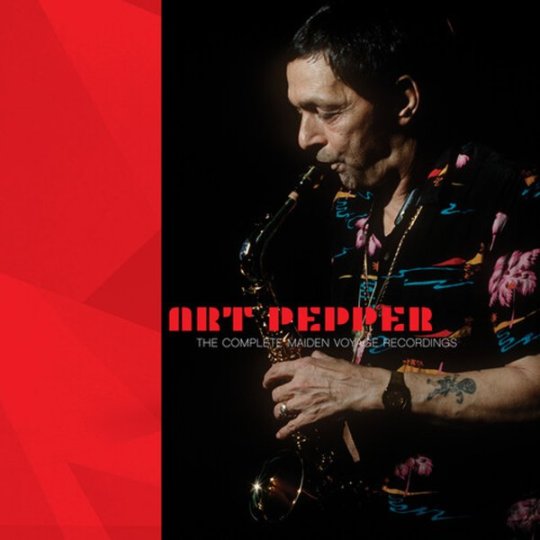
Art Pepper was an inveterate rake for most of his life, magnifying destructive interpersonal tendencies with drugs and frustratingly frequent acts of self-sabotage. That star-crossed propensity makes the fact that he left so much magnificent music even more miraculous. This lavish box is a fascinating compendium of the constantly competing artistic contradictions at his center, collecting a quartet gig across three nights and seven club sets in Pepper’s native Los Angeles, ten months prior to his premature passing at 56. Over half of the music is previously unreleased and the rhythm section, led by the impeccable and implacable pianistics of George Cables, gives Pepper a cumulative confidence boost that keeps him on the rails. None of it has ever sounded better.
Pan Afrikan People’s Arkestra
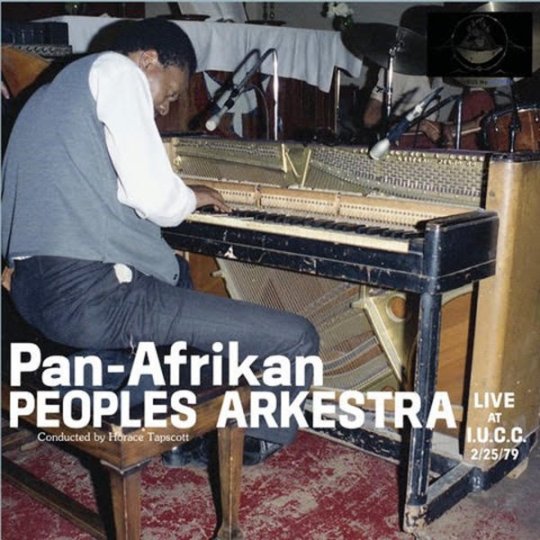
Los Angeles of the late-1970s was an unforgiving environment for the economic necessities of orchestral jazz. The Pan Afrikan People’s Arkestra, under the nominal leadership of pianist/composer/community organizer Horace Tapscott, was a tenaciously subversive force in the face of that ruinous rule. Adopting the Immanuel United Church of Christ as an informal base of operations, the large ensemble resourcefully engaged in an ambitious series of concerts in 1979. The Nimbus label, long a Tapscott exponent and repository, released the first three entries this year in an archival subscription series collecting the voluminous results. Titles are also available individually and present the pivotal band at a performative peak with star soloists Sabir Mateen, Billy Harris, Jesse Sharps, and Robert Miranda shining just as bright as their fearless foreman.
Alan Skidmore – A Supreme Love
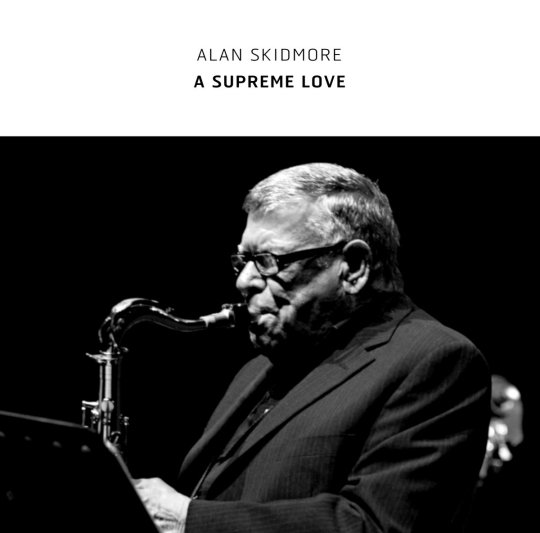
Unexpectedly issued on Mark Wastell’s Confront label, an imprint better known for its fealty to free improvisation, this six-disc archival tribute to Alan Skidmore’s 70+ year career in music launches with the saxophonist’s 1961 radio debut and lands some seven-hours later with his intimate 2019 rendering of John Coltrane’s “Psalm.” The aural expanse between is brimming with bright moments and luminary collaborators the likes of which include Tony Oxley, Kenny Wheeler, Wayne Shorter, Dave Holland, Mike Osborne, Elvin Jones, and another dozen name drops from the top tier of improvised music. It’s a wild, illuminating ride and a sterling example of a musical memorial done right.
The Jazz Doctors – Intensive Care/Prescriptions Filled: The Billy Bang Quartet Sessions 1983/1984 (Cadillac)

Billy Bang and Frank Lowe shared a bottomless fraternal bond forged through parallel traumas internalized in Vietnam and expressed by the subsequent embrace of the restorative power of improvised music. The pair of sessions (one reissued, one archival) collected on this disc epitomize their deep attachment arguably as well as any of their other numerous collaborations. Outside the cardinal duo, the Jazz Doctors never really had a stable lineup, but the quartets here embody two of their best. Both programs are loosely adherent to freebop conventions with violin and tenor saxophone combining over contrabass and drums for a potent front line. Bang and Lowe are long gone now, their shared absence making the availability of this music even more precious.
Attila Zoller & Jimmy Raney
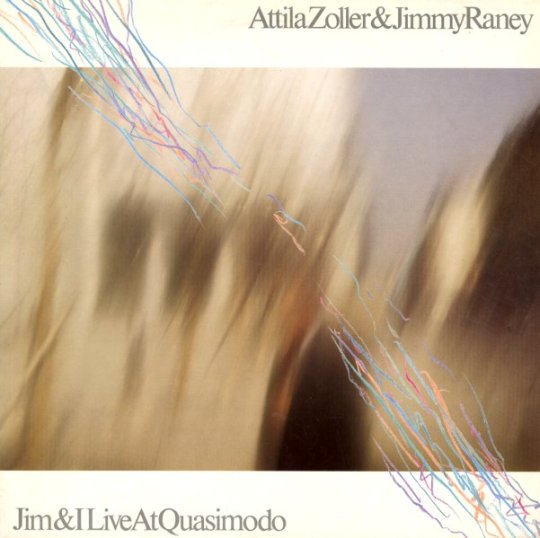
Hungarian guitarist Attila Zoller had selective affinity for other artists on the instrument, so much so that his mid-career period is seeded by fateful encounters with plectrist peers. Most prolific among these partnerships was his prudent pairing with Jimmy Raney. A popular proponent of bop-based jazz, Raney was in a similar exploratory headspace when the two joined forces on a trio of recordings for the German L + R label over a seven-year span. Concert dates from Frankfurt (’80) and Berlin (’86) find the duo spooling out lengthy dialogues that dabble in free improvisation while keeping codified melodies within reach. An earlier New York encounter (’79) explores their rapport in a studio. All three reissues on the Japanese Ultra-Vybe imprint are aces.
Steve Swell’s Fire Into Music
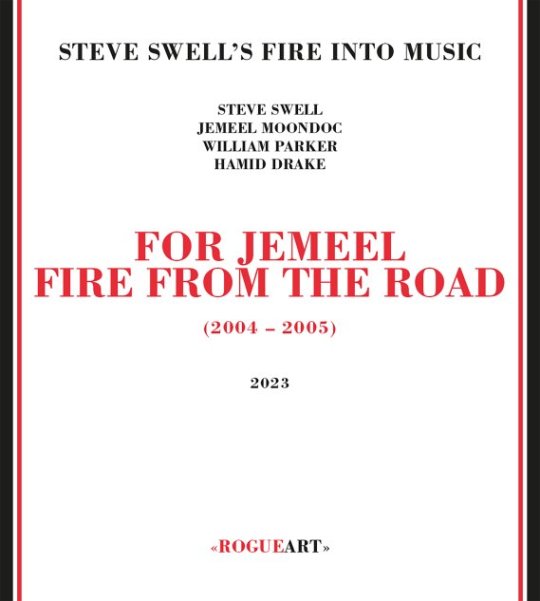
Simultaneously emblematic of NYC free jazz in the early aughts and fiercely dedicated to resisting pitfalls of provincialism by touring generously and rigorously, trombonist Steve Swell’s Fire into Music was one of the finest quartets of its kind. Posthumously dedicated to the late altoist Moondoc, this three CD set collects a trio of small venue concerts by the band from gigs in Texas and Ontario. As with the horns, William Parker and Hamid Drake are ideally suited to the extended, expository freebop safaris that formed the ensemble’s flexible repertoire. Swell’s the leader on paper but sagely embraces musical communalism without fail.
Intakt

Running a physical media imprint in the 21st century is an inherently parlous enterprise, but this steadfast Swiss label continues to evidence how it’s done. This year’s standout catalog entries include Andrew Cyrille’s Music Delivery/Percussion, the octogenarian drummer’s third solo album and first in 45-years; bassist Jöelle Leandré’s solo Zurich Concert; pianist Aruán Ortiz’s Serranías Sketchbook for Piano Trio; Beyond Dragons by the trio of saxophonist Angelika Niescier, cellist Tomeka Reid, and drummer Savannah Harris, and Ohad Talmor’s Back to the Land, a quartet-plus-guests survey that takes its compositional focus an archival workshop date by Ornette Coleman and Lee Konitz.
Ezz-thetics
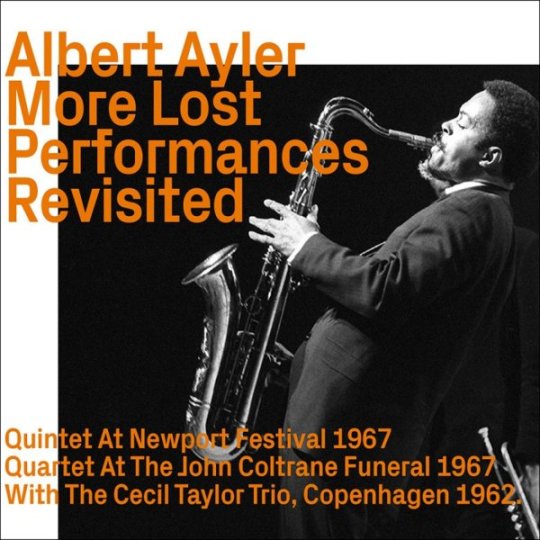
The appearance of the Swiss Ezz-thetics imprint four years ago raised both eyebrows and ire. Lacking access to master tapes, veteran free jazz and new music producer Werner Uehlinger sourced commercially released editions instead, employing ace audio engineer Peter Pfister succeeded by Michael Brandli to rejuvenate and refurbish the recordings, stateside copyright considerations be damned. Reaction was expeditious and polemical, but proof is in the hearing as most of the label’s dozens of releases sound better than their original incarnations. Catalog highlights this year include another round of Albert Ayler airshots including his pivotal meeting with the Cecil Tayor Trio in 1962 on More Lost Performances, Charles Mingus’ At Antibes 1960, and Ornette Coleman’s At the Golden Circle.
Fresh Sound
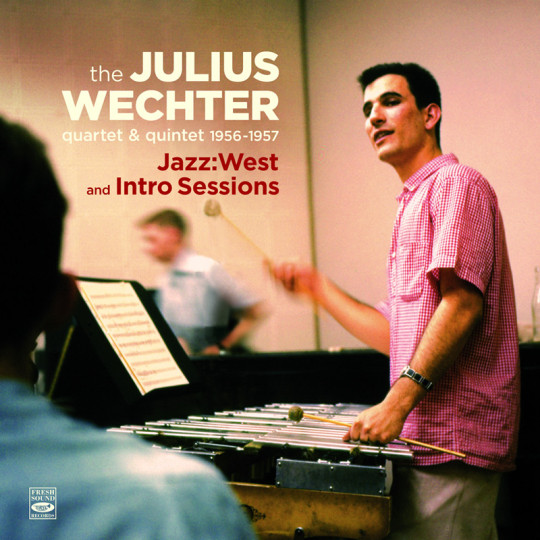
Jordi Pujol is akin to Uehlinger in that he refuses to let his vision and ambitions as a producer be abbreviated by external opinion. In Pujol’s case it’s yielded a bountiful inventory of antiquarian titles that rights holders have shown little to zero interest in restoring to begin with. Cases in point for this year include a definitive collection of obscurando saxophonist Boots Mussulli’s works; concert and studio collections by the Count Basie alumni tandem of Al Grey and Billy Mitchell; hens’ teeth rare leader sessions by Arthur Lyman vibraphonist Julius Wechter; and a two-fer of Julliard-trained Ellingtonian Cass Harrison piano trio albums. Exciting guilty pleasures all around.
Playing for the Man at the Door
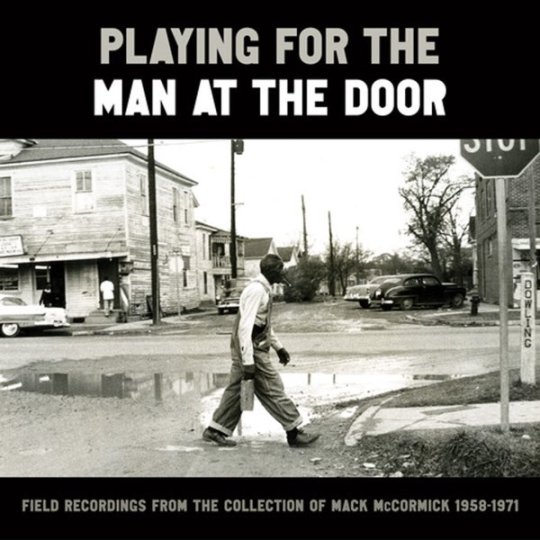
As complex as he was controversial, Robert “Mack” McCormick deserves consideration in the esteemed company of other maverick cultural archivists like Alan Lomax, George Mitchell, and Harry Smith. With a preservationist purview mostly comprising Texas and bordering states, McCormick spent much of his adult life obsessively documenting and disentangling the cultural capital of the region through recordings, photography, interviews, essays, and research. Smithsonian Folkways became repository for the massive reservoir after his passing and this box is the first in what will hopefully be multiple dispatches from the same. Unreleased field recordings of Mance Lipscomb and Lightnin’ Hopkins represent the big names, but works by the likes of Hop Wilson, Cedell Davis, Robert Shaw, and a handful of others are just as persuasive. Bongo Joe Coleman’s impassioned presidential pitch closing the set will have listeners pining for a time when third party Executive Branch candidacy didn’t seem so fraught.
Joni Mitchell Archives - Vol. 3, The Asylum Years 1972 to 1975
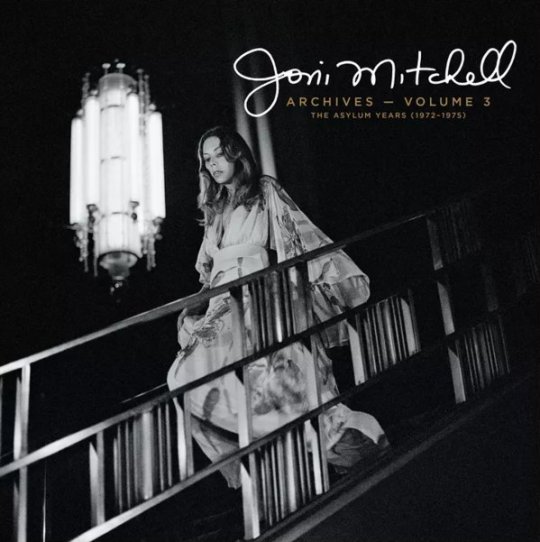
Mitchell’s continuing project corollary to her old friend Neil Young’s analogously exhaustive retrospective enterprise, this third entry in the series finds her 30-something-self further broadening the lens of her art beyond the solo concert music that dominated the first two boxes. There are stirring solitary shows here, too, but it’s the band offerings that prove most revealing, particularly in the company of reedist Tom Scott’s fusion group L.A. Express. James Taylor, Graham Nash, and David Crosby lend contributory hands, and there’s a brief but intriguing collaboration with Young alongside a trove of demos and workshop versions of songs from her first three albums for Asylum.
Martin Davidson

In closing, another memorial. Martin Davidson wasn’t a musician, but European free improvisation as an art and archive would be a fraction of what it is without his copious and enduring work. As steadfast proprietor of the Emanem label he put his resources into musicians whose efforts frequently fell outside the probability of consistent commercial remuneration. Under his aegis, influential improvisers like Steve Lacy, Derek Bailey, Evan Parker, and Paul Rutherford gained robust catalogs alongside other aspiring artists who never garnered even niche cachet. Davidson was a curmudgeon and an anachronism, trusting his ears implicitly, suffering the indignities of inquiries from strangers seeking audience with the hip hop icon who shared the phonetics of his imprint’s name, and advancing the pleasures of physical media well past their purported expiration date. He was also a talented writer, adding invaluable context to his releases through first-person testimony and critique. Martin will be missed.
And as is tradition in this 20th iteration of this year-end exercise, 25 more titles in stochastic order. Thanks to all for reading, and gratitude to Jennifer Kelly for providing the forum and formatting.
Rodrigo Amado’s The Bridge – Beyond the Margins (Trost)
James Brandon Lewis – For Mahalia with Love (Tao Forms)
Henry Threadgill – The Other One (Pi)
Guillermo Gregorio – Two Trios (ESP)
Rob Brown – Oceanic (RogueArt)
Rich Halley Quintet – Fire Within (Pine Eagle)
Milford Graves w/ Arthur Doyle & Hugh Glover – Children of the Forest (Black Editions)
Mike Osborne – Starting Fires: Live at the 100 Club 1970 (British Progressive Jazz)
Jim Hall – Uniquities Vol 1 + 2 (ArtistShare)
Madhuvanti Pal – The Holy Mother (Sublime Frequencies)
V/A – On the Honky Tonk Highway with Augie Meyers & the Texas Re-Cord Company (Bear Family)
Mal Waldron & Terumasa Hino – Reminiscent Suite (Victor/BBE)
Oum Kalsoum – L’Astre D’Orient 1926-1937 (Fremeaux & Associates)
Sonny Rollins w/ the Heikki Sarmanto Trio – Live at Finlandia Hall Helsinki 1972 (Svart)
V/A – Equatoriana: El Universo Paralelo de Polibio Mayorga (Analog Africa)
Evan Parker – NYC 1978 (Relative Pitch)
V/A – If There’s a Hell Below (Numero Group)
John Coltrane – Evenings at the Village Gate (Impulse)
Derek Bailey & Paul Motian – Duo in Concert (Frozen Reeds)
Peter Brötzmann/Fred Van Hove/Han Bennink/Albert Mangelsdorff – Outspan 1 & 2 (FMP/Cien Fuegos)
Hasaan Ibn Ali – Reaching for the Stars: Trios/Duos/Solos (Omnivore)
Mark Dresser – Tines of Change (Pyroclastic)
Steve Millhouse – The Unwinding (Steeplechase)
Myra Melford’s Fire and Water Quintet – Hear the Light Singing (RogueArt)
V/A – Destination Desert: 33 Oriental Rock & Roll Treasures (Bear Family)
#dusted magazine#derek taylor#yearend 2023#Peter Brötzmann#Wayne Shorter#jazz#kidd jordan#charles gayle#kirk knuffle#joe mcphee#don byas#fred anderson#Jason Adasiewicz#natural information society#Abdul Wadud#marion brown#art pepper#Pan Afrikan People’s Arkestra#Alan Skidmore#The jazz doctors#Attila Zoller & Jimmy Raney
16 notes
·
View notes
Text
youtube
marion brown -- new blue
3 notes
·
View notes
Text
Grachan Moncur III: The Avant-Garde Trombone Pioneer
Introduction: Grachan Moncur III, a prominent figure in the avant-garde jazz movement of the 1960s, is celebrated for his innovative approach to the trombone and his contributions as a composer and bandleader. With a career spanning over six decades, Moncur’s work has left an indelible mark on the world of jazz. His ability to push the boundaries of the genre while maintaining a deep sense of…

View On WordPress
#Al Cooper#Archie Shepp#Art Blakey#Bob Cranshaw#Bobby Hutcherson#Cecil McBee#Dizzy Gillespie#Evolution#Grachan Moncur II#Grachan Moncur III#Herbie Hancock#Jackie McLean#Jazz Composer&039;s Orchestra#Jazz History#Jazz Trombonists#Lee Morgan#Marion Brown#One Step Beyond#Paris Reunion Band#Some Other Stuff#Tony Williams#Wayne Shorter
2 notes
·
View notes
Text


real shame no one made a two for brown. and then a one for whoever did that etc
2 notes
·
View notes
Text

Jazz pianist Dave Burrell. Photo by Shawn Brackbill.
5 notes
·
View notes
Video
Amina Claudine Myers – Poems For Piano (The Piano Music Of Marion Brown)...
1 note
·
View note
Photo

The Group – Live in Cambridge https://cenaindie.com/album/the-group-live-in-cambridge/
#Ahmbed Abdullah#Andrew Cyrille#Billy Bang#Bootlegs#Experimental#Gringas#Jazz#Marion Brown#Sirone#The Group#cenaindie#download#mp3
1 note
·
View note
Text
Co w jazzie piszczy [sezon 1 odcinek 33]
premierowa emisja 27 grudnia 2023 – 18:00 Graliśmy: Geri Allen and Kurt Rosenwinkel “Simple #2” z albumu “A Lovesome Thing” – Motema Music / Heartcore Records Bill Evans “How My Heart Sings” z albumu “Tales. Live in Copenhagen (1964)” – Elemental Music Records The Dave Brubeck Quartet “When the Saints Go Marching In” z albumu “Live From The Northwest, 1959” – Brubeck Editions Oscar…

View On WordPress
#Ahmad Jamal#Bill Evans#Brubeck Editions#Cadillac Music#Cal Tjader#Co w jazzie piszczy#Dave Brubeck#Duke Robillard#Duke Robillard Organ Trio#Ed Thigpen#Elemental Music#Elemental Music Records#Günter Hampel#Geri Allen#Heartcore Records#Jazz Detective#Kurt Rosenwinkel#Mack Avenue Records#Marion Brown#MIG Music#Mike Westbrook#Motema Music#Oscar Peterson#Ray Brown#Resonance Records#The Dave Brubeck Quartet#Wes Montgomery#Wynton Kelly#Zzebra
0 notes
Text
Days Of Steam 002: svvimming
(Mix released March 20, 2021) "Lemongrass Mix" is the only descriptor given me when @benjamin_munoz sent this over. Much like how his music feels like mobile sculptures hanging in midair, attached by strings but with no solid ground, left to float, this mix brings together surrealist soundworlds and unclassifiable infinities. Herzog, Kureishi, and Miyazaki meeting at the local. Mutant pop consorts with free jazz, hyperpop blasts dissolve into musique concrète - the bleeps and scattered tones of a mind forming itself, and revealing itself to the world.
svvimming - Birth Of A Tragedy [Unreleased, 2021] Asao Kikuchi - Echo Room [Childisc, 2001] Marion Brown & Gunter Hampel - And Then They Embraced [Improvising Artist, Inc., 1978] Frank Reidy & Eric Allen - Void [Bruton Music, 1978] Masayoshi Fujita & Jan Jelinek - What You Should Know About Me [Faitiche, 2016] Silzedrek - Gwen’s Pen [A Colourful Storm, 2020] Coil - Teenage Lightning 2 [Wax Trax!, 1991] Boris Kovač - Caravan Orient [Points East, 1989] Mary Lattimore - Silver Ladders [Ghostly International, 2020] svvimming - Untitled (soup knives) [Unreleased, 2021] Tony Hymas - Pictures Of Departure [Nato, 1988] Berenice - Dry River Bed [Telephone Explosion, 2020] svvimming - Flywheel [Unreleased, 2021] Giuseppe Lelasi - Part 1 (Another Stunt) [Schoolmap, 2008] Timo Lassy & Teppo Mäkynen - Nyanza [We Jazz, 2019] Roxanne Turcotte - Olé-Léa-Léo [Empreintes DIGITALes, 1994] Shushu & Vebe Suprada - Crush [Abîme, 2019] Maxwell Sterling - Synthetic Beach [The Death Of Rave, 2017] Moro - Xxandi [JANUS, 2018]
#SoundCloud#svimming#Asao Kikuchi#Marion Brown#Gunter Hampel#Frank Reidy#Eric Allen#Masayoshi Fujita#Jan Jelinek#Silzedrek#Coil#Boris Kovac#Mary Lattimore#Tony Hymas#Berenice#Giuseppe Lelasi#Timo Lassy#Teppo Makynen#Roxanne Turcotte#Shushu#Vebe Suprada#Maxwell Sterling#Moro#days of steam
1 note
·
View note
Photo
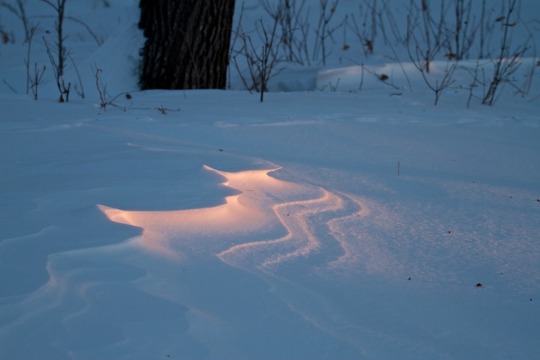
“The light constantly changes, and that alters the atmosphere and beauty of things every minute.” ~ Claude Monet
35K notes
·
View notes
Text
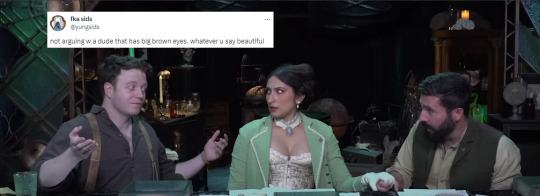
#critical role#candela obscura#circle of needle and thread#sean finnerty#jinnah basar#marion collodi#the EXACT moment this makes reference to is ep 2 at 3:12:21#LISTEN no one can argue with marion's big beautiful brown eyes lbr#f
303 notes
·
View notes
Text









The Gilded Age + Headpieces
Marion "Mamie" Graves Anthon Fish's headpieces in the first & second season.
#The Gilded Age#Mamie Fish#Marion Graves Anthon Fish#headpieces#costume drama#costumesource#period drama#perioddramaedit#1800s#19th century#hats#tiaras#crowns and tiaras#brown#blue#silver#orange#white#green#black#Newport#Rhode Island#New York City#New York#USA#North America
21 notes
·
View notes
Photo
Marion Brown - Le Temps Fou LP (1969)

26 notes
·
View notes
